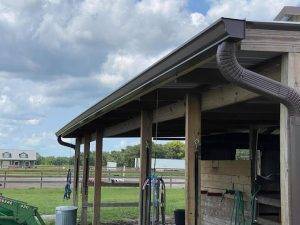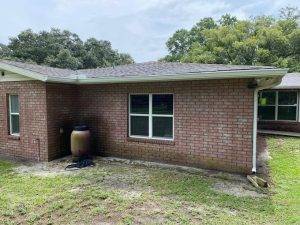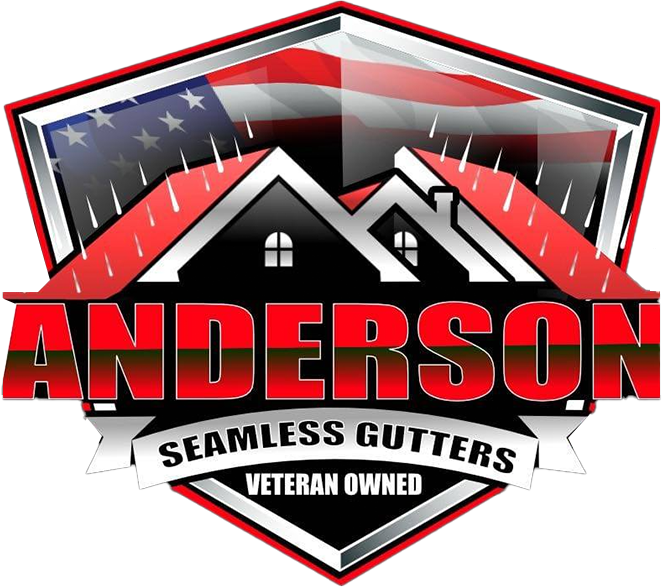Gutter repair is essential for maintaining the structural integrity of your home. Gutters play a crucial role in directing rainwater away from your roof and foundation, preventing water damage and erosion. Neglecting gutter maintenance can lead to various issues, including clogs, leaks, and sagging, which can cause significant damage to your property. This comprehensive guide will explore everything you need to know about gutter repair, from identifying common problems to choosing the right repair techniques.
Understanding Gutter Systems
Types of Gutters
Gutters come in different styles, each with unique features and benefits. Sectional gutters are made of pre-cut sections joined together. They are easy to install and cost-effective but have more seams, which can lead to leaks over time. Seamless gutters are custom-made on-site and feature no joints, reducing the likelihood of leaks and requiring less maintenance. These gutters are often more durable and offer a cleaner appearance. Gutter materials vary widely, with options such as aluminum, vinyl, and steel. Each material has advantages and disadvantages in cost, durability, and maintenance requirements.
Components of a Gutter System
A well-functioning gutter system comprises several key components that work together to manage water flow. Downspouts channel water from the gutters to the ground, preventing overflow and protecting your home’s foundation. Common downspout problems include blockages and improper placement, which can cause water to back up or pool near your home. Gutter guards are essential for preventing clogs by keeping debris out of the gutters. Various types of gutter guards are available, each offering different levels of protection and maintenance requirements. Hangers and brackets provide structural support, ensuring gutters remain securely attached to your home. Proper installation and maintenance of these components prevent sagging and maintain stability.
Signs of Gutter Problems
Identifying gutter problems early can prevent costly repairs and damage to your home. Visible damage, such as cracks, rust, or sagging, indicates that your gutters need attention. Assessing the severity of damage helps determine whether repair or replacement is necessary. Water overflow from gutters during rain suggests blockages or misalignment, which can lead to water damage to your home’s exterior and foundation. Inspecting gutters for overflow and addressing blockages promptly can prevent further damage. Foundation issues may arise from improper water drainage caused by malfunctioning gutters. Signs of foundation problems include cracks, settling, or moisture in your basement, which can be costly to repair if not addressed promptly.
Common Gutter Problems
Clogged Gutters
Clogged gutters are one of the most common gutter problems, often caused by the accumulation of leaves, twigs, and debris. Causes of clogs include inadequate maintenance, the presence of overhanging trees, and a lack of gutter guards. Neglected gutters can develop severe blockages that impede water flow. Impact of clogs can be significant, leading to water overflow, roof damage, and erosion around your home’s foundation. These issues can compromise the structural integrity of your home if left unaddressed. Preventing clogs involves regular gutter cleaning and maintenance, as well as the installation of gutter guards to keep debris out and ensure proper water flow.
Leaking Gutters
Leaking gutters can cause water damage to your home’s exterior and interior. Causes of leaks include cracks, holes, and separated joints caused by wear and tear or improper installation. Exposure to harsh weather conditions can also exacerbate leaks. Identifying leaks involves inspecting your gutters for visible signs of damage, such as rust or water stains on your home’s siding. A garden hose can also test for leaks by running water through the gutters and checking for drips. Repairing leaks typically involves sealing small holes with gutter sealant or patching larger holes with a gutter repair kit. Regular inspections and timely repairs can prevent leaks from worsening.
Sagging Gutters
Sagging gutters occur when gutters become too heavy or improperly supported. Causes of sagging include the accumulation of debris, improper installation, and weather-related damage. Over time, sagging can lead to gutter detachment and damage to your home. Signs of sagging include visibly uneven gutters, water pooling in sections, and gutters pulling away from your home. Addressing sagging promptly prevents further damage and ensures proper water drainage. Fixing sagging gutters may involve adjusting or replacing hangers and brackets, cleaning out debris, and reinforcing gutters with additional support. In some cases, replacing severely damaged sections may be necessary.
Gutter Repair Techniques
DIY Gutter Repair
For minor gutter issues, DIY repairs can be a cost-effective solution. Tools and materials needed for DIY gutter repair include a ladder, gloves, a gutter scoop, a garden hose, gutter sealant, and repair kits for patching holes. Safety equipment, such as a harness or spotter, is essential when working at heights. Step-by-step repair guide for common gutter repairs involves cleaning out debris, inspecting for damage, sealing leaks, and securing loose sections. Following manufacturer instructions and safety precautions ensures effective results. When to call a professional depends on the extent of damage and complexity of repairs. Professional assistance may be necessary for extensive damage or when specialized tools are required.
Professional Gutter Repair Services
Hiring professional gutter repair services offers expertise and efficiency in addressing gutter issues. Choosing a gutter repair service involves evaluating factors such as experience, reputation, and customer reviews. A reliable service provider should offer transparent pricing and guarantee quality workmanship. Cost of professional repairs depends on the severity of damage, materials needed, and labor costs. Obtaining multiple quotes and comparing services can help you find a cost-effective solution. Benefits of professional repairs include access to specialized tools, expert knowledge, and long-lasting results. Professional repairs ensure your gutter system functions properly, protecting your home from water damage.
Advanced Repair Techniques
For more complex gutter issues, advanced repair techniques may be necessary. Gutter relining involves installing a new liner inside existing gutters to prevent leaks and improve water flow. This method is suitable for older gutters with significant wear. Resealing and waterproofing techniques involve applying sealant or waterproof coating to gutters, enhancing their durability and resistance to leaks. Regular resealing can extend the life of your gutter system. Gutter replacement may be necessary when gutters are beyond repair or have reached the end of their lifespan. Replacement involves selecting new gutters that meet your needs and budget, ensuring long-term performance and protection.
Preventive Maintenance for Gutters
Regular Cleaning and Inspection
Regular cleaning and inspection are crucial for maintaining a healthy gutter system. Frequency of cleaning depends on factors such as climate, the presence of trees, and the age of your gutters. Generally, gutters should be cleaned and inspected at least twice a year, in spring and fall. Tools for effective cleaning include a sturdy ladder, gloves, a gutter scoop, and a garden hose. Using the right equipment ensures thorough cleaning and minimizes the risk of damage. Inspection checklist involves checking for signs of damage, clogs, and proper water flow. Identifying issues early allows for timely repairs and prevents further damage.
Installing Gutter Protection Systems
Gutter protection systems can significantly reduce maintenance needs and extend the life of your gutters. Types of gutter guards include mesh, screen, and foam inserts, each offering different levels of protection and maintenance requirements. Choosing the right type depends on your specific needs and budget. Installation process for gutter guards involves securing the guards over your existing gutters, preventing debris from entering and causing clogs. Professional installation ensures a proper fit and optimal performance. Maintenance of gutter guards involves periodic inspection and cleaning to ensure they remain effective. Regular maintenance of guards reduces the frequency of gutter cleaning and extends the life of your gutter system.
Seasonal Gutter Maintenance
Seasonal maintenance is essential for adapting to changing weather conditions and protecting your home. Winter gutter care involves preventing ice dams and ensuring gutters remain clear of snow and ice. Insulating your attic and using heat cables can help prevent ice buildup. Spring and fall maintenance tasks include clearing debris, inspecting for damage, and ensuring proper water flow. These tasks prepare your gutters for increased rainfall and prevent issues from worsening. Adapting to climate conditions involves tailoring your maintenance routine to suit your area’s weather patterns. Regular adjustments ensure your gutter system remains effective and protects your home year-round.
Environmental Impact of Gutters
Water Management
Gutters play a vital role in managing water runoff and preventing environmental damage. The role of gutters in water management involves directing rainwater away from your home, preventing soil erosion and water pooling. Proper water management protects your landscaping and foundation. Reducing runoff and flooding is crucial for minimizing the environmental impact of heavy rainfall. Gutters help channel water away from your property, reducing the risk of flooding and water damage. Rainwater harvesting systems can be integrated with your gutter system to collect and reuse rainwater for irrigation and other non-potable uses. This sustainable practice reduces water consumption and supports environmental conservation.
Sustainability and Materials
Choosing sustainable materials for your gutter system can reduce your environmental footprint. Eco-friendly gutter materials include aluminum, which is recyclable and durable, and copper, known for its longevity and minimal maintenance needs. These materials offer environmental benefits and long-term performance. Recycling old gutters involves properly disposing of or repurposing materials to reduce waste. Many recycling centers accept metal gutters for recycling, contributing to environmental conservation. Reducing environmental impact involves selecting durable materials, maintaining your gutter system, and implementing sustainable practices. Regular maintenance ensures your gutters remain effective and minimizes the need for replacement.
Green Buildings and Gutters
Incorporating gutters into green building practices supports sustainability and energy efficiency. Incorporating gutters in green design involves selecting materials and designs that complement sustainable building practices. Properly designed gutter systems enhance energy efficiency and protect your home from water damage. Gutter systems in LEED certification can contribute to achieving LEED points by promoting sustainable water management and reducing environmental impact. This certification enhances your property’s value and environmental responsibility. Promoting environmental responsibility involves educating homeowners about the benefits of sustainable gutter practices and encouraging the adoption of eco-friendly materials and maintenance routines.
FAQs
How often should gutters be cleaned?
Recommended Cleaning Frequency: Gutters should be cleaned at least twice a year, in spring and fall, to remove debris and ensure proper water flow.
Seasonal Considerations: Areas with heavy tree coverage or frequent storms may require more frequent cleaning to prevent clogs and damage.
Signs That Gutters Need Cleaning: Overflowing water, sagging gutters, and visible debris are signs that gutters need cleaning.
What are the costs associated with gutter repair?
Factors Influencing Costs: Repair costs depend on the extent of damage, materials used, and labor required for the repair.
DIY vs. Professional Costs: DIY repairs may be cheaper initially, but professional repairs ensure quality and long-lasting results.
Budgeting for Gutter Repair: Plan for regular maintenance and set aside funds for unexpected repairs to manage costs effectively.
Can gutters be repaired instead of replaced?
Assessing Repair vs. Replacement: Gutters with minor damage, such as small leaks or loose sections, can often be repaired instead of replaced.
Common Repair Scenarios: Cracks, holes, and misaligned sections are common issues that can be addressed with repairs.
When Replacement is Necessary: Severe damage, such as rusted or extensively sagging gutters, may require replacement.
How do I choose the right gutter material?
Comparing Gutter Materials: Consider factors such as cost, durability, and maintenance when choosing between materials like aluminum, vinyl, and steel.
Climate and Environmental Considerations: Select materials that withstand local weather conditions and minimize environmental impact.
Cost and Maintenance Considerations: Balance initial costs with long-term maintenance requirements to select a cost-effective option.
What are the benefits of seamless gutters?
Advantages Over Sectional Gutters: Seamless gutters have fewer joints, reducing the risk of leaks and requiring less maintenance.
Installation and Cost Considerations: While seamless gutters may have higher upfront costs, their durability and reduced maintenance needs offer long-term savings.
Performance and Longevity: Seamless gutters provide reliable performance and a cleaner appearance, enhancing curb appeal.
How can I prevent gutter clogs?
Gutter Guard Options: Install gutter guards to reduce debris buildup and prevent clogs, choosing from options like mesh, screen, or foam inserts.
Regular Cleaning and Maintenance: Maintain a regular cleaning schedule to remove debris and inspect for damage, ensuring proper water flow.
Landscape and Roof Considerations: Trim overhanging branches and manage roof debris to minimize debris accumulation in gutters.
What should I do if my gutters are leaking?
Identifying Leak Sources: Inspect gutters for cracks, holes, and joint separations, using a hose to test for leaks.
Temporary Fixes and Solutions: Use gutter sealant or repair kits for temporary fixes, and schedule repairs for long-term solutions.
Long-Term Repair Options: Consider professional repairs for extensive damage to ensure lasting results and prevent further issues.
How can gutters contribute to sustainability?
Water Conservation Strategies: Use gutters for rainwater harvesting, reducing water consumption and supporting environmental conservation.
Eco-Friendly Gutter Materials: Choose sustainable materials like aluminum or copper for reduced environmental impact and long-term performance.
Sustainable Maintenance Practices: Implement regular maintenance to prolong gutter lifespan and reduce the need for replacements.
Are gutter repairs covered by homeowner’s insurance?
Insurance Coverage for Gutters: Coverage depends on the cause of damage and your policy terms, with most policies covering sudden and accidental damage.
Filing a Claim for Gutter Damage: Document damage and contact your insurer to file a claim, providing evidence and estimates for repair costs.
Exclusions and Limitations: Review your policy for exclusions and limitations, as damage from neglect or wear may not be covered.
What are the best tools for DIY gutter repair?
Essential Tools for Gutter Repair: Gather tools such as a ladder, gutter scoop, sealant, and repair kits for effective DIY repairs.
Safety Equipment and Precautions: Use safety equipment like gloves and a harness, and follow safety precautions when working at heights.
Tool Maintenance and Storage: Store tools in a dry, organized space to prolong their lifespan and ensure readiness for future repairs.
Conclusion
Gutter repair is vital for maintaining your home’s structural integrity and preventing water damage. By understanding common gutter problems, repair techniques, and maintenance practices, homeowners can protect their property and ensure their gutter system functions effectively. Regular inspections, timely repairs, and sustainable practices contribute to a healthy gutter system and support environmental conservation. Take action to assess your gutters, implement necessary repairs, and explore professional services for comprehensive maintenance and repair solutions.
Related Posts

Avoid Roof Damage During the Holidays: How Gutters Protect Valrico Homes

How to Choose the Best Gutter Materials for Long-Term Durability

Seamless Gutter Benefits for Modern and Historic Homes Alike

Keeping Your Gutters in Shape All Year with Seasonal Maintenance

How Professional Gutter Installation Prevents Basement Flooding


